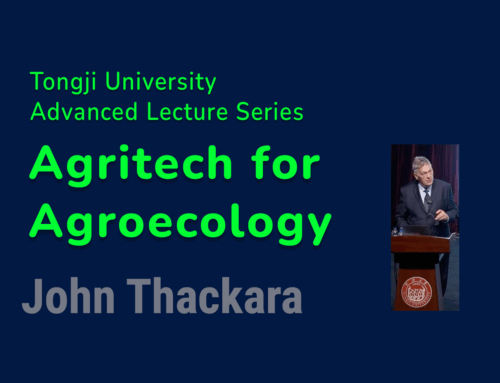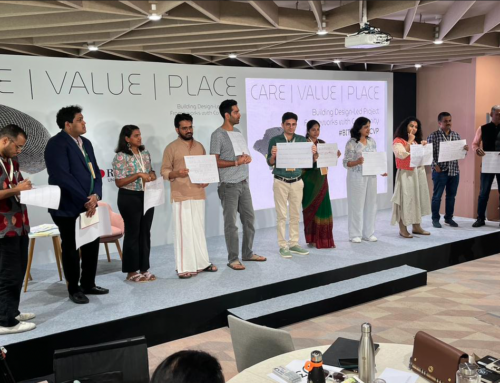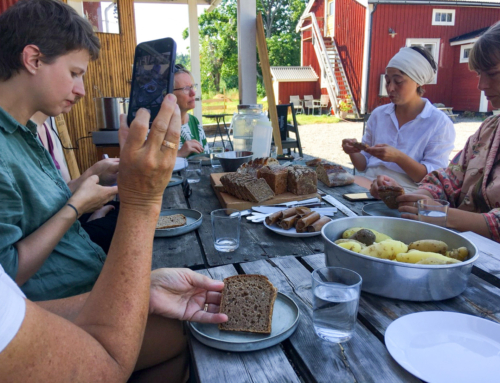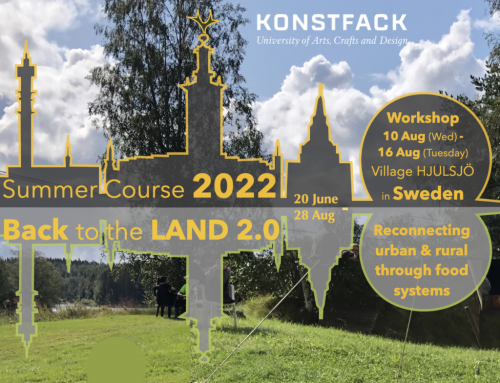Hanging out with health system innovators in recent times I’ve been struck by two interesting things. The first is that the buzz in the investor community about health apps is palpable. To feed the hunger, a new incubator called Rock Health, positioning itself as “the seed accelerator for health startups”, promises to “power the next generation of the digital health ecosystem” and bring together “the brightest minds in technology and healthcare”.
All this would be great were were it not for the second thing I’ve learned: there’s almost no contact between the health apps crowd and the food system crowd. And this is weird.
The need for a whole systems approach is urgent. In the US, one in five children aged 6 to 11 is now obese. Each one of them risks heart disease and diabetes in later life. Industrialised food is one of the major causes of these childrens’ sickness. If more of them had access to better and affordable food, fewer people would get diabetes and heart disease – and many of the hot new diabetes-monitoring iPhone apps would not be needed.
Why is this nightmare happening? Well, between 1995 and 2010, North American taxpayers spent over $260 billion on subsidies of junk food ingredients compared to $262 million – *one thousand times less* – subsidising apples [which is pretty much the only fresh food to get a subsidy at all].
Where’s the app to fix that?
Of course it’s hard. Maybe it’ll take a saint to figure out how to be a whole-systems, whole-food entrepreneur. But in the absence of such a saint, we probably need to call these things sickness apps, not health apps.
Thankfully there’s a lot of service innovation – if less investor frenzy – in the local food system space.
A new kind of community supported agriculture [CSA] project has been launched in Paris, for example.
“La Ruche Qui Dit Oui” (“The hive that says yes!” or LRDQ) is a business model and web platform that enables anyone to set up a fair trade organic food distribution and supply network – and make a sustainable social business out of it at the same time.
Compared to traditional community supported agriculture [CSA] schemes, LRDQ enable consumers to choose the products they want to receive rather than be sent a box full of produce chosen by the farmers.
La Ruche is the brainchild of Guilhem Cheron, an industrial designer and chef. He drew on expertise gained during fifteen years in the design industry to develop new ways for people to develop better relationships with the farmers their food came from. With the motto “Manger mieux, manger juste” (“Eat Better, Eat Fair”) La Ruche cuts out traditional food system intermediaries – but also supports local hives on practical matters to do with information, logistics and other issues.
Anyone can start her or his own “hive”. They look for local food producers to work with, and recruit neighbours, friends, and family into their hive. The ideal number seems to be 30-50 people. Among the nearly 150 hives established to date, the average La Ruche member lives in the city, uses social networks regularly, has a full time job, and has an average age of 29.
Once the hive is up-and-running, producers offer their product at a desired price, and hive members place their orders. The producer receives exactly the price asked for, but the consumer pays 20% more than that. Of this, 10% goes to the leader or administrator of the community ruche; 7% to La Ruche HQ; 3% for taxes and bank fees.
Although most of the day-to-day interaction – such as contacting new suppliers, distributing the offer of products, aggregating offers – is internet-based, a social element is integral to the scheme. Delivery and distribution of orders happens one day per week at a convenient location; there, hive members get together to distribute the produce.
Guillem and his team are constantly looking for ways to make the system responsive to everyday needs. For example, if a whole cheese is too big for a single family, how can quarters and halves be supplied in a way that works for both sides of the exchange?
“I didn’t invent anything new” Guillem told Ortiz, “I just merged different ideas into a service that worked better for the people involved. We’ve designed a tool that can make the distribution and exchange process ten times faster, and easier, and be more appealing, than existing systems. An important aspect has been to create a a social enterprise model rather than just a voluntary organisation, such as the AMAPs.
At the moment, the La Ruche is only available in France. But this type of web-enabled direct distribution has huge potential on a global scale.
Third world coffee farmers, for example, receive a paltry 10 per cent, at best, of the eventual retail price. Along with the negative effect this has had on living conditions, the drive for increased output has had a knock-on effect on the environment as well, with mono-cropping and sun grown coffee now the norm.
La Ruche is one among a bunch of new online marketplaces to be springing up. In France, a new conference of food platform developers called Techfoodtook place in Paris this summer. And In the US, too, several such projects were documented at the website Food + Tech Connect when it posed the question: How Can Information & Technology Be Used To Hack The Food System?
Farmigo, for example, consumers to find, select, and receive fresh food from local farms and producers that are delivered direct to convenient pick-up locations. Farmigo charges a 2% transaction fee for food sold through the system. This is paid by the producer and does not impact the price shown to consumers.
] Face time before transaction time
Online platforms like La Ruche and Farmigo are terrific development – but it’s an exaggeration to claim, as Farmigo does, that they are “providing an alternative food system”. In systems-speak, they’re providing the technical bit of a social-technical system which is a much bigger and more complex thing than a web platform.
For one thing, many otherwise passionate and reform-minded farmers, and other food system actors, are wary. “We just prefer real face to face time,” a meat processor told FoodTech Connect. “We do our processing by hand.”
Transparency, it emerges again and again, is not only a technical feature. Even when people are keen to try innovative approaches, a lot of trust-building face-to-face time is needed to set a new food system.
David Barrie, who led our urban farming project in Middlesbrough as part of Dott 07, had at least 50 face to face meetings before the first carrot was even planted. “That critical early period involved a lot of networking meetings with people in local government” David recalls; “I had to identify and connect with people responsible for many different services in the town – and then get them to take responsibility for supporting different strands of work in the urban farming project itself”.
We also discovered during Dot07 that many lessons we were learning for the first time had been common currency for 20 years in other parts of the world.
In the developing south, for example, the complex social-ecological networks of urban agriculture have been studied since three early 1990s.
Such books as Agriculture in Urban Planning or Agropolis are filled with case studies from Argentina, Botswana, Cote d’Ivoire, Cuba, France, Togo, Tunisia, and Zimbabwe.
NOTE Material in this story about La Ruche Qui Dit Oui is taken from on the masters thesis of Natalie Ortiz: “A New Sustainable Designer: A Case Study of Collaborative Services and Creative Communities”. For a copy of her thesis please contact natyort [at] gmail dot com






